Seven native species and one commonly escaped species of maple occur in Michigan. Maples have opposite leaves. Trees in Michigan with opposite leaves are Maples, Ashes, Dogwood, Horse-chestnut, and Ohio Buckeye. I remember “MAD Horse” to know the opposite leaved trees.
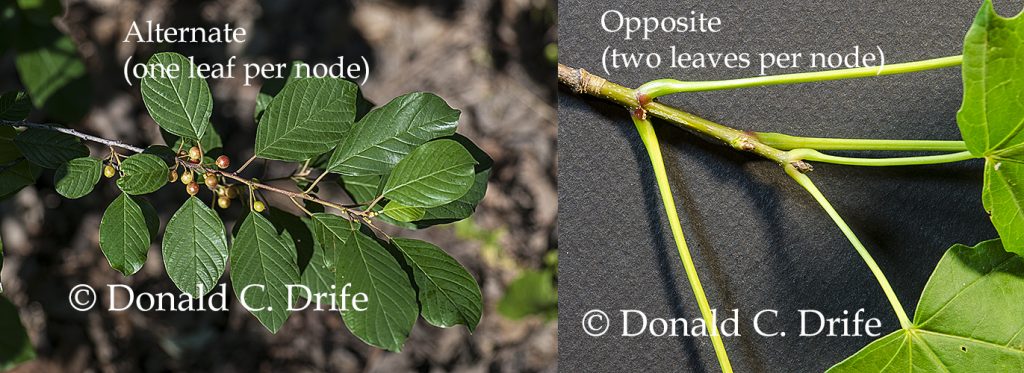
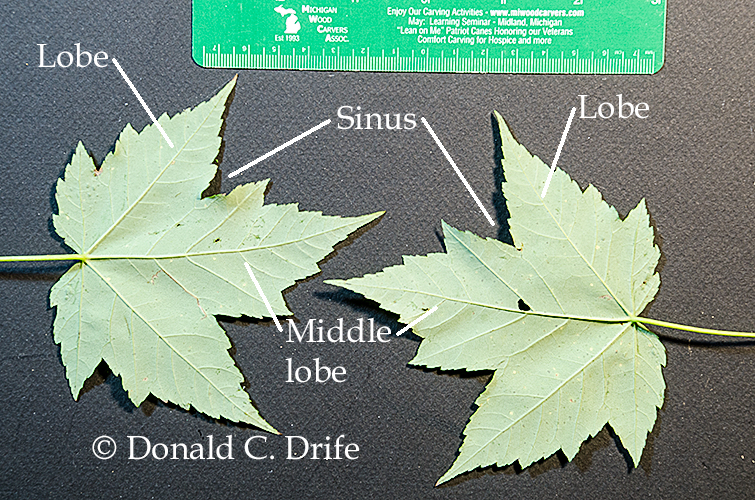

Horse-chestnut and Ohio Buckeye have palmately compound leaves (the leaflets radiate from a single point similarly to your fingers on your palm). Dogwoods have simple leaves with entire margins (no teeth along the edges of the leaves). Ashes are pinnately compound with 7 to 13 leaflets. Box-elder is our only maple with compound leaves and it rarely has more than 5 leaflets. Once you know you have a maple this is how you identify the maples to species:
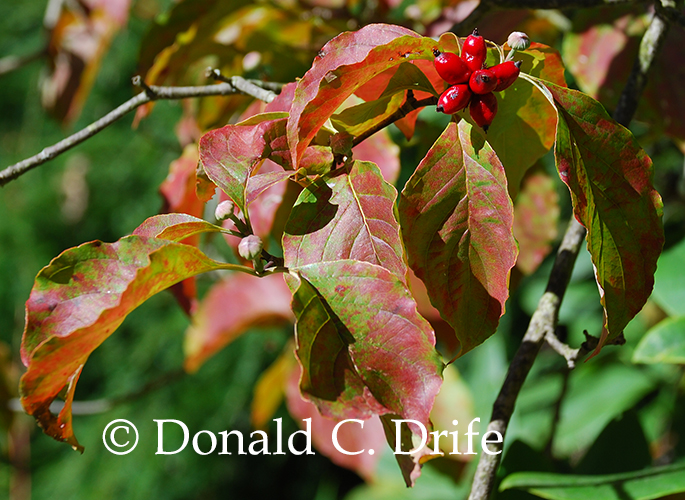
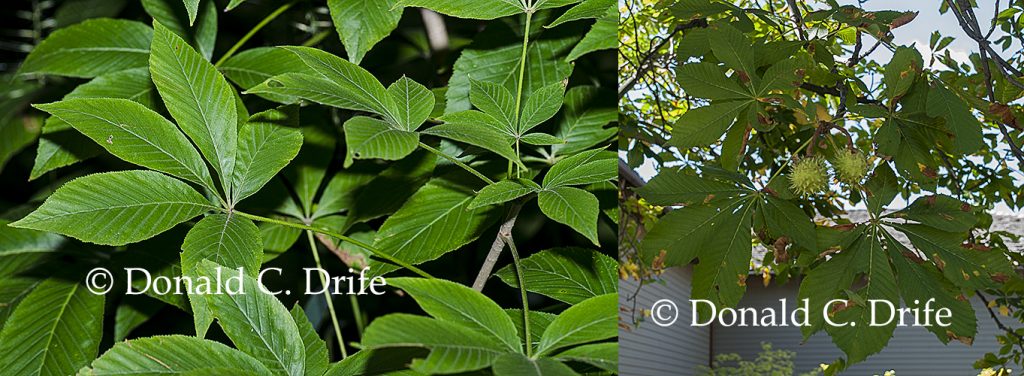
Box-elder or Ash-leaved Maple or Manitoba Maple (Acer negundo) has compound leaves, course teeth on the leaflets, and a whitish bloom on the twig. Clusters of paired seeds hang on the tree in the summer and fall giving another method to distinguish this from the ashes.
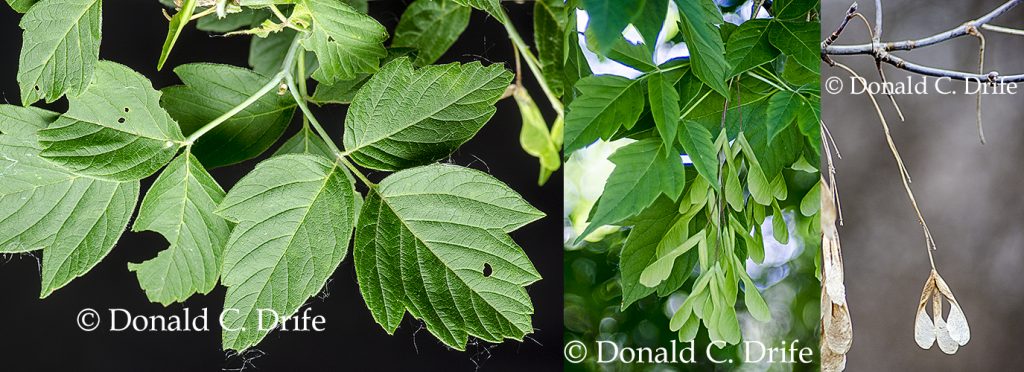
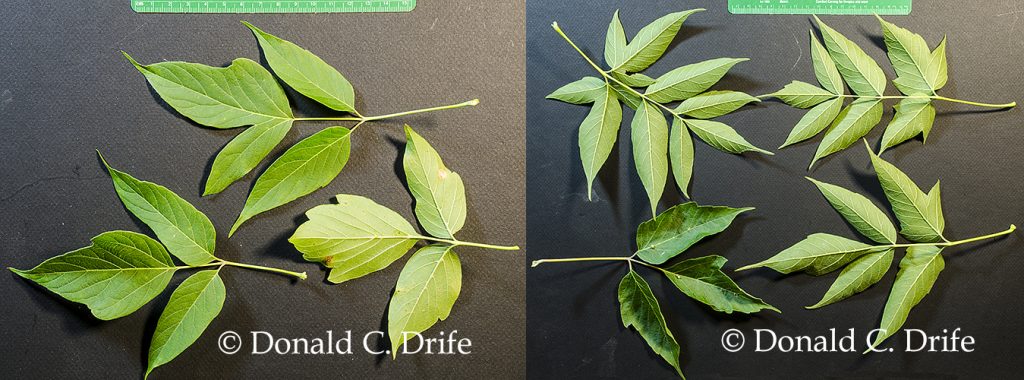
Silver, Red, Mountain and Striped Maples all have the main leaf sinuses acutely angled at the base. The other simple leaved species have leaf sinuses that are rounded. This takes a little practice to discern but the photos should help.
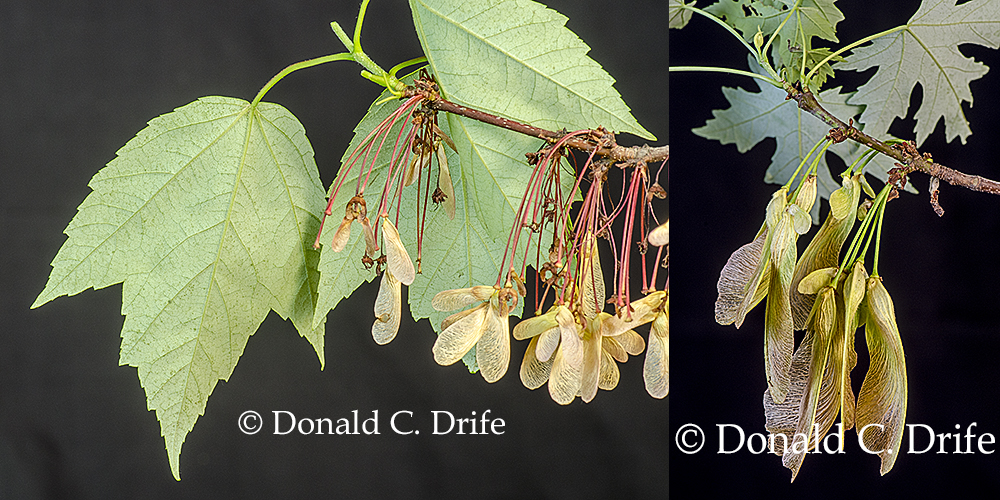

Silver Maple (Acer saccharinum) leaves are whitish-silver beneath with coarse toothed leaf margins. It has five main lobes with the edges of the middle lobe diverging. It is coarser toothed than the Red and Mountain Maples and lacks teeth in the sinuses. The sinuses extend 2/3 of the way to the midrib. It is one of our earliest flowering trees: flowering before the leaves develop. Silver Maple flowers lack sepals and petals and have a hairy ovary. Chew a twig if you are not sure it is Silver Maple. To me they have a foul taste.
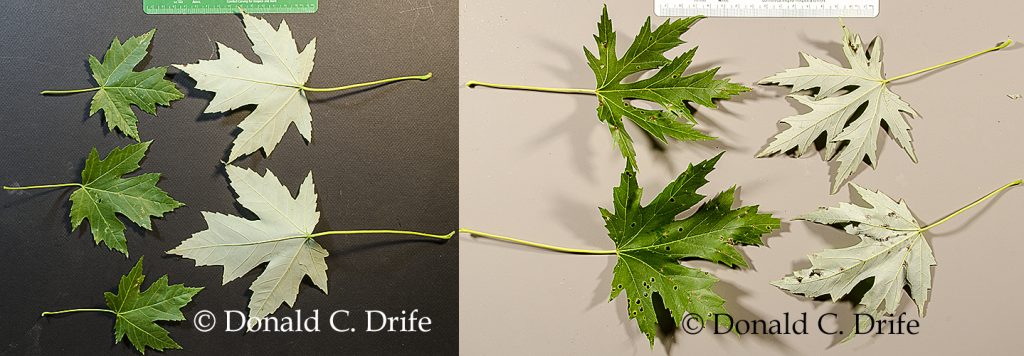
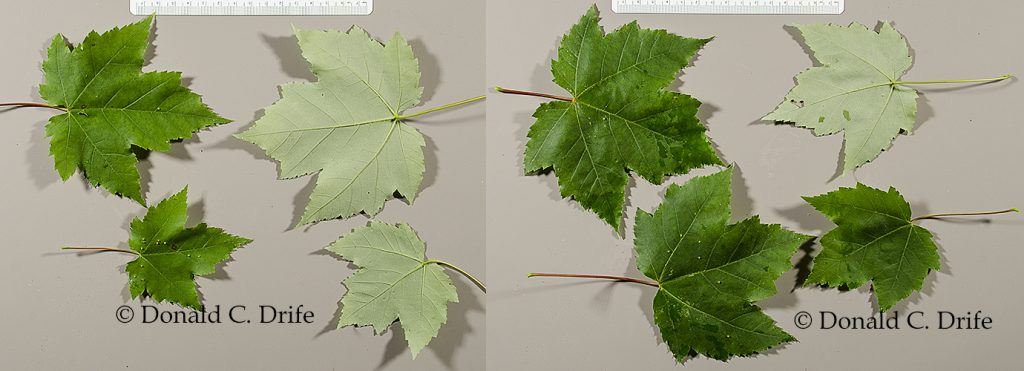
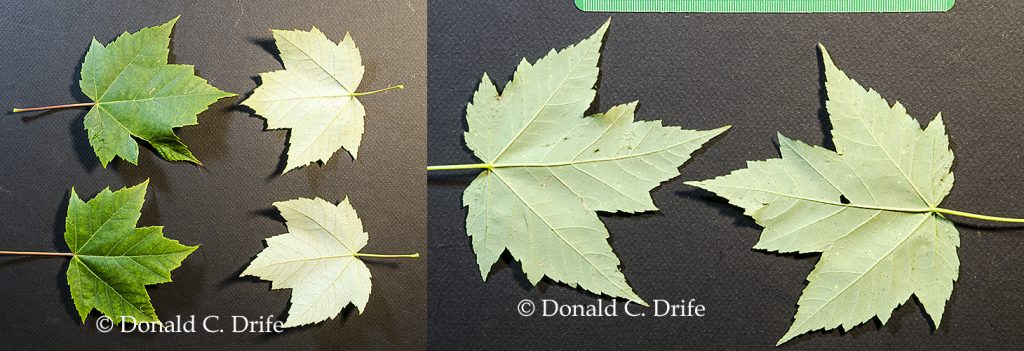
Red Maple (Acer rubrum) leaves are whitish-silver beneath with finely toothed leaf margins. It has three main leaf lobes with the edges of the middle lobe converging. The sinuses extend 1/2 way to the midrib and are finely toothed. The first-year twigs are normally red. It flowers when Silver Maple flowers, also before the leaves develop. Red Maple flowers have sepals and petals and a smooth ovary.
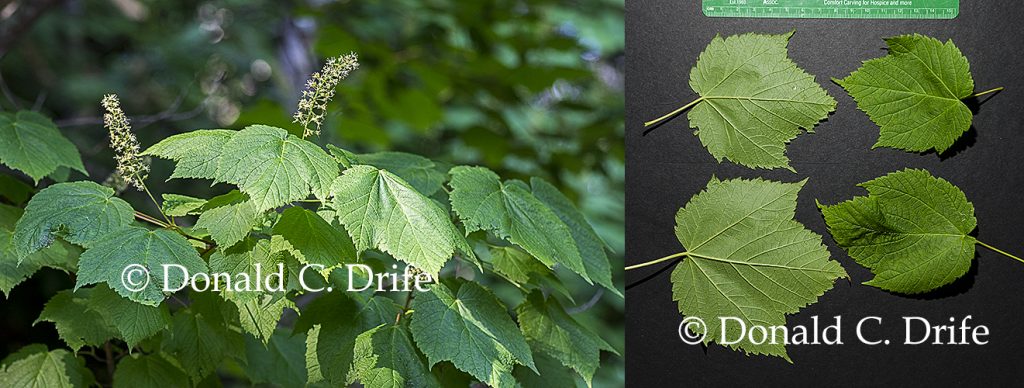

Mountain Maple (Acer spicatum) leaves are covered with whitish downy hairs beneath. It is a small tree more common in northern Michigan but I know one Oakland Co. stand. Its leaves resemble Red Maple but are more finely toothed and not as deeply lobed. It flowers in the early summer when its leaves are fully developed. The upright racemes of flowers or fruits help to identify this maple.
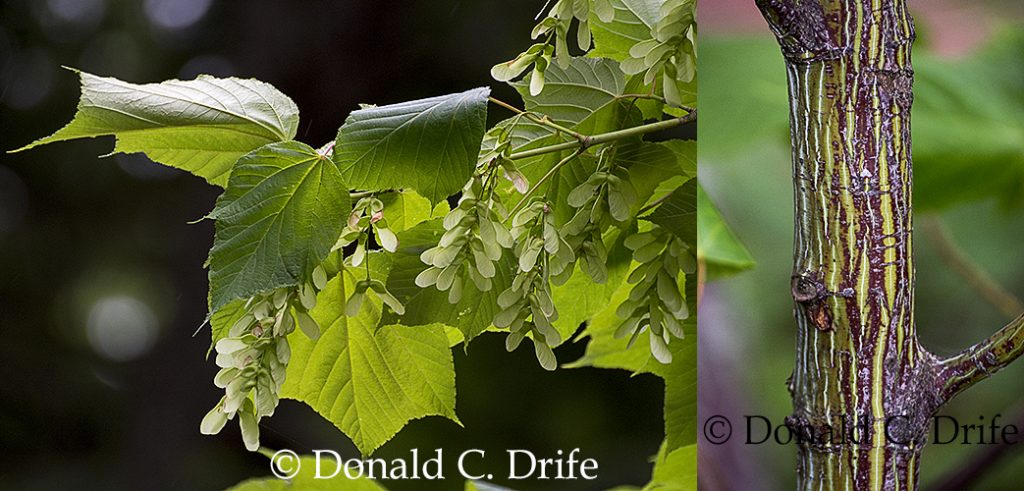
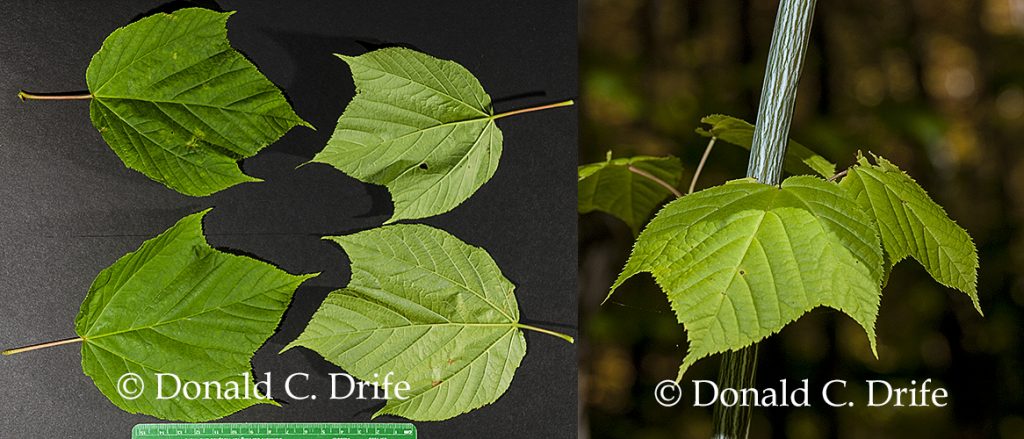
Striped Maple or Goosefoot Maple or Moosewood (Acer pensylvanicum) is similar to Mountain Maple. Striped Maple has finer, doubly serrate leaves, lacking hairs on the lower surface. Doubly serrate means that the teeth have smaller teeth. The lobes have tapering tips. Second year twigs have distinctive white stripes. It flowers in the early summer when its leaves are fully developed. The drooping racemes of flowers or fruits help to identify this maple.
Norway, Sugar, and Black Maples all have leaf sinuses that are rounded at their base.
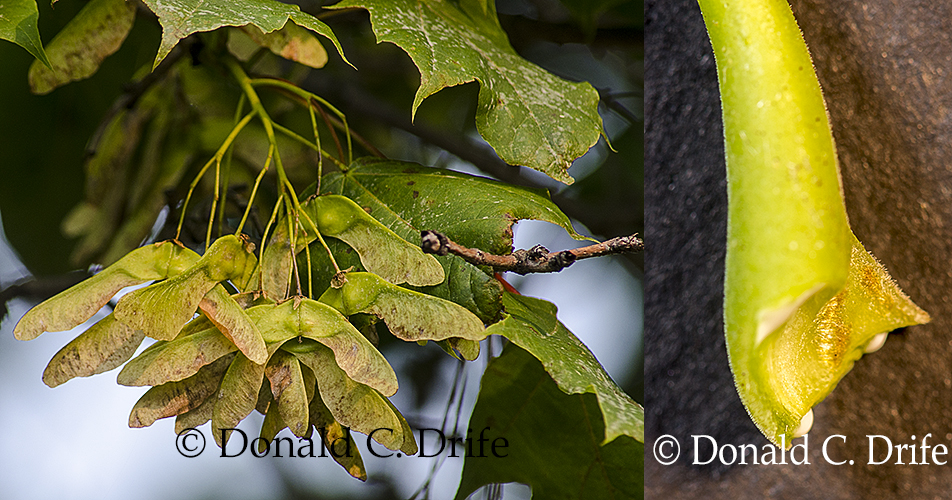
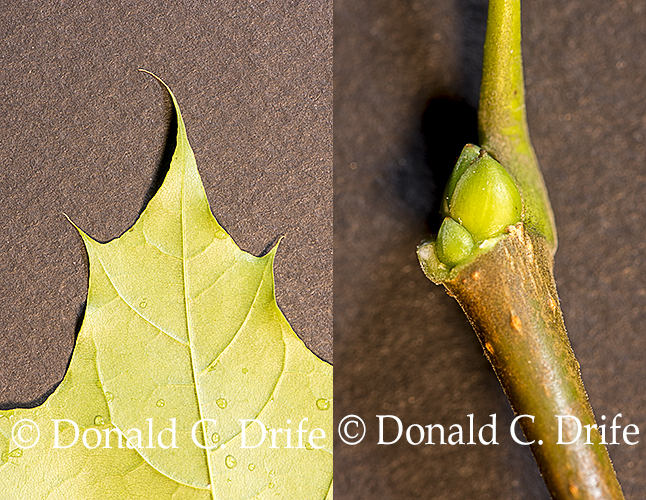
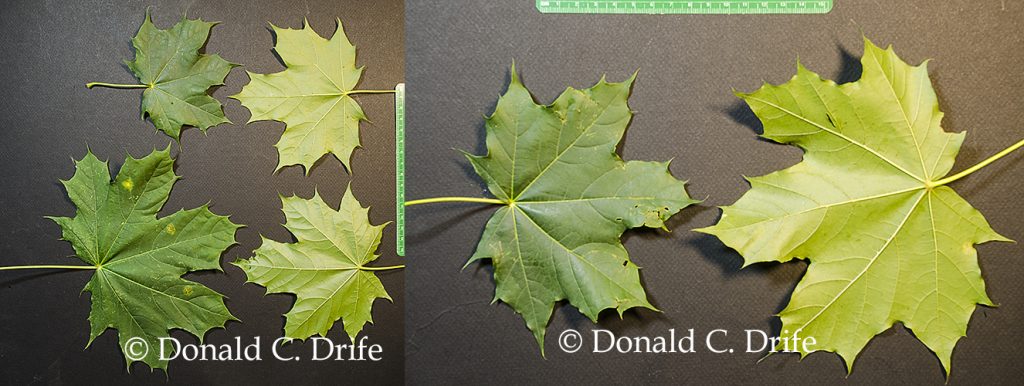
Norway Maple (Acer platanoides) is native to Europe but is now spreading from cultivation into wild areas in southern Michigan. Dark-green leaves with narrow almost awl-like tips distinguish this from Sugar Maple. Leaves are paler underneath than above with hairy tufts in the leaf axils. In the summer its petiole emits a sticky, milky juice when broken. Fruits are paired samaras that diverge 170 degrees. The seeds are flat, barely thicker than the wings. Terminal buds are rounded not sharp as in Sugar Maple. Norway Maple leaves stay green later in the season than Sugar Maples.


Sugar Maple or Hard Maple (Acer saccharum) is similar to Norway Maple but with lighter green, five-lobed leaves. Its leaves are more or less smooth underneath but sometimes it has hairs at the leaf base where the veins join. In the summer its petiole emits a non-milky, clear juice when broken. I often look for the sharp terminal bud to distinguish Sugar from Norway Maple.
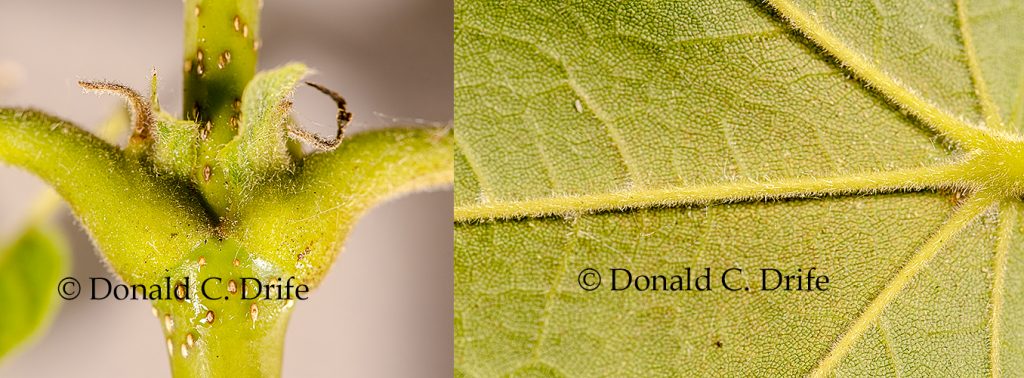
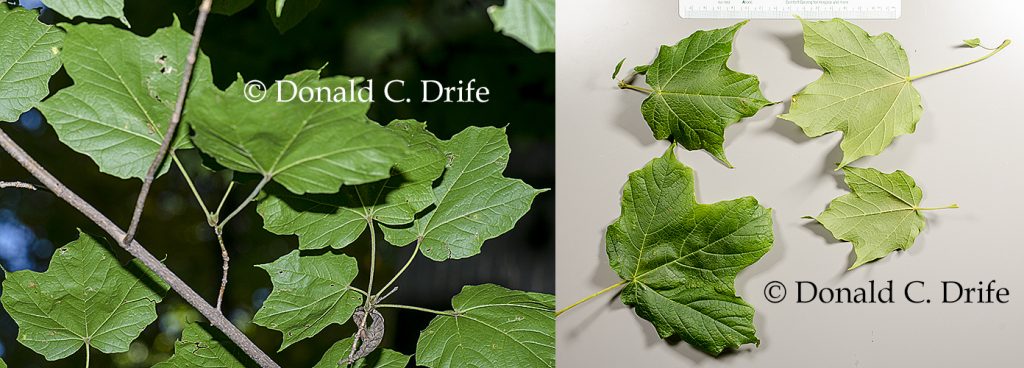
Black Maple (Acer nigrum) is a pragmatic species that intergrades into Sugar Maple. Barnes and Wagner in their Michigan Trees accept this species, Voss in his Michigan Flora treats it as a variety of the Sugar Maple, and Reznicek on the Michigan Flora website accepts it with reservations. The extreme forms are distinct. Black Maple has three-lobed leaves with drooping leaf tips. They are pubescent underneath and on the petioles. Leaf stipules are normally present. Twigs are straw-colored. Black Maple is a tree of wet soil growing in river bottoms. However, intermediates exist that resemble Sugar Maple but with pubescent veins. They could be hybrids between Black and Sugar. It might be better to treat them as one variable species. I’m content to know that I cannot name every individual and call them Sugar / Black Maple.
Here is a link to my blog post on identifying maples using their seeds.
The Michigan Flora Website has further information and more photographs.
There is a citizen scientist project headed up by Steve Gougherty. Steve is a graduate student at the Finzi Lab at Boston University. He is studying Red Maples and needs volunteers to collect samples for him. He started the TASpeR (Traits Across Species’ Ranges) website. This site provides information on his study and a link to sign up if you want to participate. He asks for two collections: one of green leaves and one after the leaves have fallen. He is studying foliar nutrient resorption. His website explains what this means. Sign up if you want to collect for him.
Copyright 2019 by Donald Drife
Webpage Michigan Nature Guy
Follow MichiganNatureGuy on Facebook

Can you offer any assistance in regards to a small plant/tree 2 feet in height. The leaves are Maple shaped and the leaves are 8-10 inches in size. We reside in the tip of the thumb of Michigan and are surrounded by red, silver and sugar maples. We have never seen any maple tree with leaves this large. Any thoughts?…The Acer macrophyllum I thought only grew native to the pacific northwest??
Thank you
It is unlikely that it is Acer macrophyllum. Norway Maple has the widest leaf of our Maples. Young trees growing in shade will sometimes have huge leaves. I would identify it by the shape of the leaf, and not worry about the size.
Don: a friend wants to plant native Michigan maples on the SE shore of Saginaw Bay. Which species do you think would stand up to (or gracefully bend with) the strong winds we get here?
Incidentally, I think we may have met back in the 80s when I was associating with Jim Wells.
Yes, we did meet a few years ago. Any of the native maples should stand up to wind. I would think the soil type and moisture would be the deciding factor. Perhaps your local chapter of WildOnes or your local extension service could recommend something. My blog is about identification and not really about growing plants.